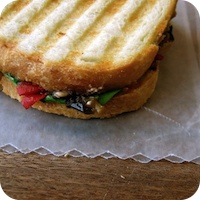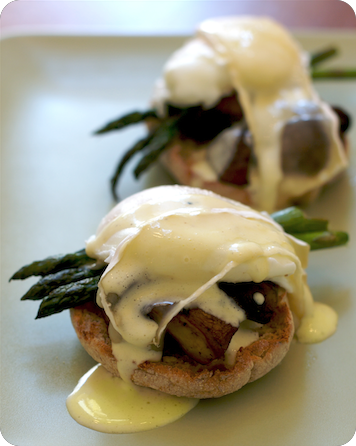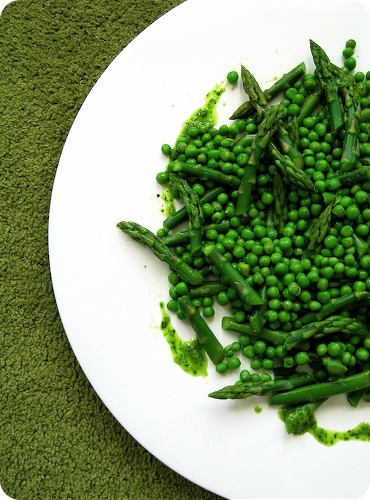Tongue tied
 Friday, February 27, 2009 at 1:34PM
Friday, February 27, 2009 at 1:34PM 
This dish is similar to peperonata, shares ingredients with caponata, but is more of a relish. It could be used sparingly as a condiment or generously as a main ingredient.
With all of that variation, it is hard to reason why I am having such trouble finding the words to appropriately introduce this bowl of piquant peppers and eggplant. I feel a bit sheepish, as the inadequacy falls squarely on my shoulders; the relish is rather tasty and possesses a multitude of positive attributes. Cut into thin lengths and roasted, the vegetables delicately slip across the palate, sweet and unctuous. Vinegar-steeped then soothed with olive oil, they have an acidity that sets the mouth to water.
I will say, despite the lack of fanfare and my difficulty with uncharacteristic taciturnity, this relish has been extraordinarily easy to enjoy. Three jars have resided in our fridge in as many weeks, with the ingredients for a subsequent batch always waiting at the ready. Maybe that record is endorsement enough.


Roasted eggplant and pepper relish
The generous quantity of vinaigrette thoroughly bathes the cooked vegetables and results in a particularly-succulent result. These juices will cloud slightly when refrigerated, due to the olive oil, but will clear once brought to room temperature. Can be served as a sandwich spread (above), an antipasti, or as an accompaniment to grilled and roasted meats and poultry.
Ingredients
4 red bell peppers, seeded, cored and sliced thinly
1 medium eggplant, cut into 1/4" batons
1 large onion, halved lengthwise and then sliced very thinly
1/2 cup plus 2 tablespoons good olive oil, divided
1/4 cup good quality balsamic vinegar, see note
1 tablespoon capers, drained and chopped
2 cloves garlic, minced
2 teaspoons minced fresh basil
sprinkle of dried red pepper flakes (optional)
salt and freshly ground black pepper
Preheat oven to 425°F (220°C). On a standard rimmed baking sheet or large roasting pan, toss together the peppers and eggplant. Drizzle with 2 tablespoons of olive oil and season with salt and pepper. Roast, for 15 minutes, turning occasionally. Add 3/4 of the onion (reserve the rest) and continue to cook until the vegetables are soft but without much colour, about 25-30 minutes more.
Meanwhile, in a large bowl, make the vinaigrette; combine the vinegar, capers, garlic and basil. Slowly whisk in the 1/2 cup of olive oil, until thick and emulsified. Mix in the reserved onion and the red pepper flakes (if using), season with salt and pepper to taste and set aside.
When finished roasting, tumble the hot vegetables into the vinaigrette, tossing well to combine. Make sure to scrape any caramelized bits off of the pan and any accumulated juices. Allow the vegetables to marinate for 20 minutes at the least, serving the relish warm. My preference is to cool the mixture, then refrigerate in a sealed container overnight. It can then be served at room temperature or warmed gently.
Makes about 2 cups.
Notes:
• The reserved raw onion will slightly pickle in the vinaigrette. You can skip this step, but I like how they turn into translucent ribbons of concentrated acidity.
• For those who might find good quality balsamic vinegar overly intense, you could substitute 2 tablespoons of white wine vinegar for the same quantity of balsamic.
 bell peppers,
bell peppers,  condiment,
condiment,  eggplant,
eggplant,  recipe,
recipe,  relish,
relish,  side dish,
side dish,  vegetables,
vegetables,  vegetarian
vegetarian 




















